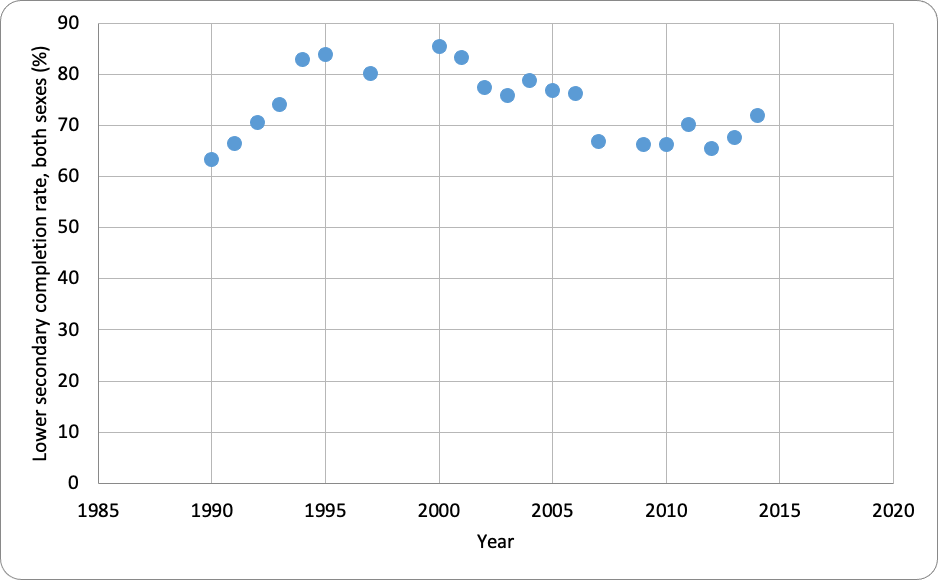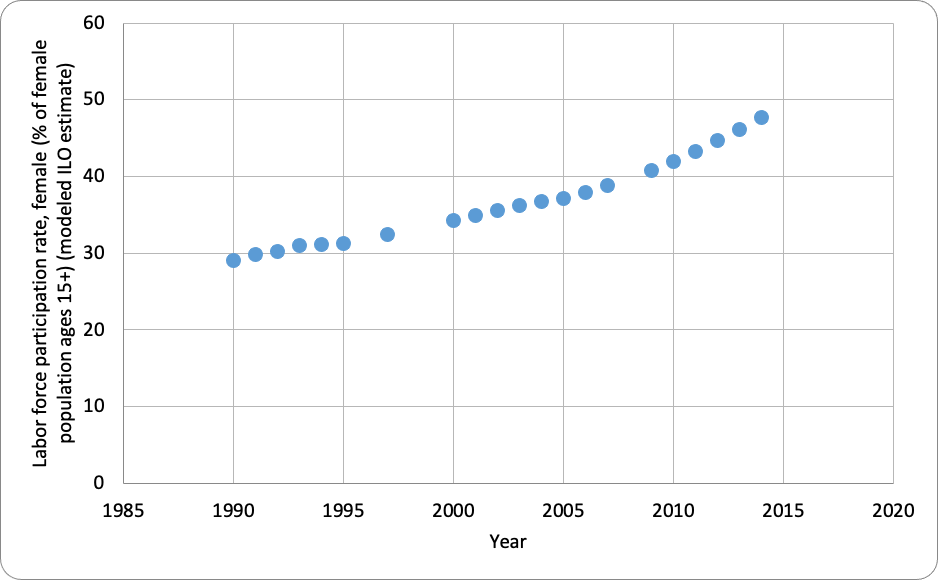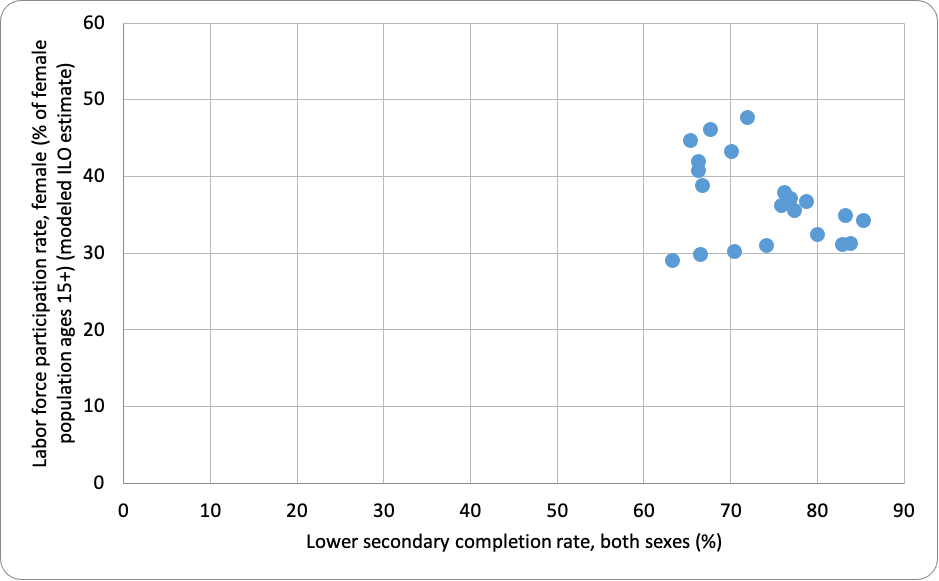Introduction
The position of women in Muslim countries has been so pronounced lately, mainly due to the view of Islam as a patriarchal religion (Charrad, 2011). There has been a notable improvement in women’s rights in various Muslim countries. The United Arab Emirates has been in the spotlight mainly as it has opened up to foreign investors and tourists. Despite the gender inequality in other middle east countries, United Arab Emirates remains better than most countries in women’s employment rates.
Other than tourism and foreign investors, it is essential to note that, like any other place, education has played a massive role in women’s employment. Generally, one expects more appreciation of women in society as the literacy level rises. Unlike Iran, U.A.E. has also enjoyed a significant period of peace that has paved the way for women’s empowerment in society. The paper seeks to determine the impact of education on women’s employment in the U.A.E.
Methodology
Women’s employment was relatively low at the beginning of the 21st century, with only about 15% of Emirati women in full-time employment (Abdulla, 2006). However, the proportion has dramatically increased over time, mainly attributed to improved access to education by females (Kemp, 2013). Other than that, literacy in society contributed much to the improvement of female employment rates in the U.A.E.
For analysis, the study uses data from Word Bank and United Arab Emirates government reports. The data will cover 24 years between 1990 and 2014 due to limited historical data in the United Arab Emirates. Some years whose data was not available were also deducted from the study. Further, the data will be cleaned and analyzed using M.S. Excel.
Calculations and Graphs
Table 1
Summary Statistics
| Lower secondary completion rate, both sexes (%) | Labor force participation rate, female (% of female population ages 15+) (modeled I.L.O. estimate) | ||
| Mean | 73.78366 | Mean | 36.7269 |
| Standard Error | 1.515031 | Standard Error | 1.232819 |
| Median | 74.16902 | Median | 36.216 |
| Mode | #N/A | Mode | #N/A |
| Standard Deviation | 6.942746 | Standard Deviation | 5.649489 |
| Sample Variance | 48.20172 | Sample Variance | 31.91672 |
| Kurtosis | -1.30785 | Kurtosis | -0.84692 |
| Skewness | 0.164485 | Skewness | 0.45656 |
| Range | 22.06016 | Range | 18.576 |
| Minimum | 63.302 | Minimum | 29.083 |
| Maximum | 85.36216 | Maximum | 47.659 |
| Sum | 1549.457 | Sum | 771.265 |
| Count | 21 | Count | 21 |
Figure 1

Figure 2

Figure 3

Analysis of Data
On average, 73.8% of the people in the U.A.E. completed lower secondary U.A.E. with a standard error of 1.52%. Over the study period, the completion rate ranged between 63.3% and 85.4%. On the other hand, the proportion of women in employment over the period is 36.7% on average which varies by 1.23%. The labor participation rate among women is between 29.1% and 47.7%.
From figure 1, the completion rate increases from 1990 and peaks between 1995 and 2000—the completion rate further deeps for the next decade to 2010 before it peaked in 2014. Figure 2 shows that the proportion of women in the labor force has been increasing. Further, the line graph shows that the trend was increasing at a higher rate over the last five years of the study.
The scatter plot in figure 3 suggests a weak relationship between lower secondary completion rate and women’s labor participation rate. Further, the calculated correlation coefficient shows no reasonable relationship between the completion rate and women’s employment rate.
Conclusion
The data analysis suggests that more than lower secondary school is needed to explain the increase in women in the labor force. The completion rates are cyclical, with peaks and deeps over the 24-year period. The completion rate may need to be a sufficient measure of literacy level in society as it only encompasses a lower level of education. More sufficient data could lead to different results than what we obtained from the analysis.
References
Charrad, M. M. (2011). Gender in the Middle East: Islam, state, agency. Annual Review of Sociology, 37, 417-437.
Kemp, L. J. (2013). Progress in female education and employment in the United Arab Emirates towards Millennium Development Goal (3): gender equality. Foresight.
Abdulla, F. (2006). Education and employment among women in the U.A.E. International Higher Education, (45).
World Bank. (2022). United Arab Emirates Education, Labor. https://data.worldbank.org/country/AE.
Appendix
| Year | Lower secondary completion rate, both sexes (%) | Labor force participation rate, female (% of female population ages 15+) (modeled I.L.O. estimate) |
| 1990 | 63.302 | 29.083 |
| 1991 | 66.4731 | 29.779 |
| 1992 | 70.4955 | 30.272 |
| 1993 | 74.169 | 30.944 |
| 1994 | 82.9134 | 31.121 |
| 1995 | 83.8111 | 31.279 |
| 1997 | 80.0785 | 32.48 |
| 2000 | 85.3622 | 34.244 |
| 2001 | 83.2061 | 34.911 |
| 2002 | 77.4135 | 35.586 |
| 2003 | 75.8841 | 36.216 |
| 2004 | 78.7621 | 36.744 |
| 2005 | 76.8783 | 37.176 |
| 2006 | 76.1945 | 37.979 |
| 2007 | 66.7628 | 38.812 |
| 2009 | 66.2452 | 40.795 |
| 2010 | 66.3172 | 41.976 |
| 2011 | 70.1539 | 43.301 |
| 2012 | 65.3997 | 44.718 |
| 2013 | 67.7155 | 46.19 |
| 2014 | 71.919 | 47.659 |
 write
write